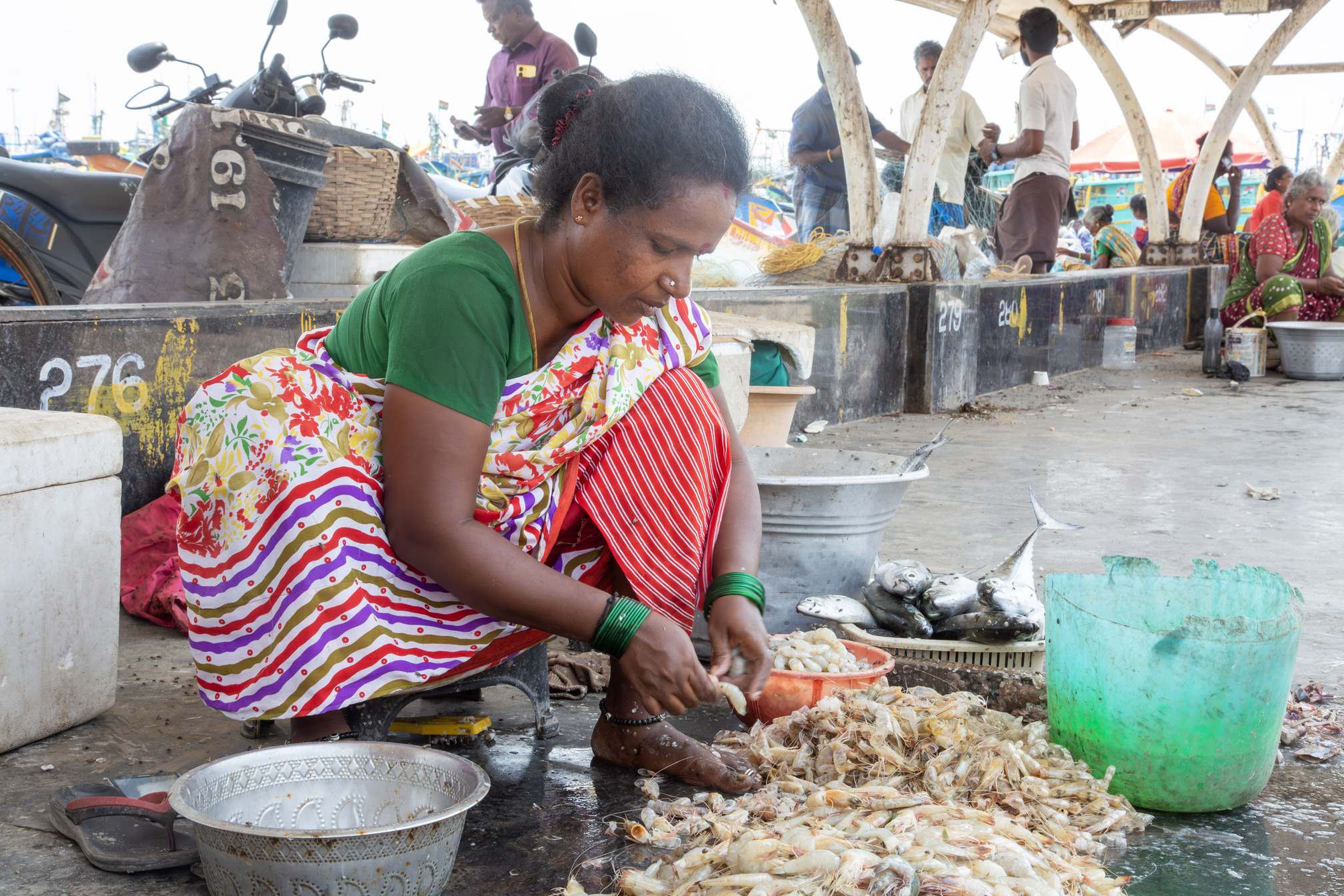Artificial reefs revive marine biodiversity in Tamil Nadu
“It's like the ocean itself is lending a helping hand.”
June 10, 2024

The Gulf of Mannar boasts diverse and productive habitats, including coral reefs, seagrasses, mangroves, estuaries, rocky shores, and sandy beaches.
Tamil Nadu is one of the nine coastal states of India, home to nearly 1.3 million fishers who rely on marine biodiversity for their livelihoods. The Gulf of Mannar region, which lies between Tamil Nadu and Sri Lanka, boasts diverse and productive habitats, including coral reefs, seagrasses, mangroves, estuaries, rocky shores, and sandy beaches.
Covering over 10,000 square kilometres, this region is considered one of the world’s most productive marine habitats, home to 3,600 species of plants and animals. The first biosphere reserve in Southeast Asian, it is the largest remaining feeding ground for the dugong, an endangered species of manatee, and home to several other rare and threatened species including turtles, dolphins, whales, and sea cucumbers.
This also makes it an important fishing area. However, recent decades have seen a sharp decline in the fisheries output. “This has been due to multiple factors,” says Dr R.T. John Suresh, founder of Participatory Learning Action Network and Training (PLANT), a conservation and social development organization.

Climate change and overexploitation of marine resources have played a major role in the decline of fisheries.
“Factors like climate change and overexploitation of marine resources have played a major role in this decline. After the 2004 Indian Ocean tsunami, many fibreglass reinforced plastic boats and nets were distributed to the fisherfolk. While this led to livelihood recovery in the short term, it eventually caused over-exploitation of marine resources. The fisherfolk, using these small gears, often catch juvenile fish and other marine organisms, due to which their populations cannot regenerate. They also cause damage to coral reefs, which are a vital breeding ground for several species,” he says.
This is where artificial coral reefs can become a catalyst to revive marine biodiversity. Artificial reefs are constructed from materials such as concrete, sand, cement, blue metal, and steel, designed to withstand marine environments and they provide a stable platform for marine life to colonize.

Dr R.T. John Suresh, founder of Participatory Learning Action Network and Training, a conservation and social development organization.
“Coral reefs are our lifeline. They bring fish to our nets, protect our houses from storms, and have sustained our communities for generations. Without them, our way of life would vanish.”- Shankar, a fisherman from Kasimedu village near Chennai Fishing Harbour in Tamil Nadu, pointing towards the endless expanse of the Indian Ocean.
A groper or ferro-concrete artificial module, made from metal and concrete, provides a surface area of six square metres in three dimensions. When this structure is placed at the bottom of the sea, only one square metre of the reef base is on the seabed, while five square metres is available for biomass production, providing support above the seabed for corals to grow.
Within six months of installation, biological processes begin with bacteria, followed by the settlement of a variety of organisms including algae, seaweeds, sponges, hard and soft corals, starfish, sea cucumbers crabs and lobsters. This succession of settlers creates a rich and diverse habitat that attracts a variety of fish and other vertebrates.
“Over time, artificial reefs can evolve to resemble natural coral reefs, especially if a natural coral reef is nearby. They can also be deployed near fishing villages so that fisherfolk can save time and fuel, and minimize damage to natural coral reefs. Artificial reefs support a healthy population of ornamental fish, which can be harvested for additional income. Through adventure tourism activities like scuba diving and snorkelling, they also offer an attractive career option, especially for youth,” says Dr Suresh.

Artificial reefs are constructed from concrete, sand, cement, blue metal, and steel, and are designed to withstand marine environments.
Kaliamurthy, a resident of Pudupet, a fishing village, corroborates this. “Thanks to the artificial reefs, our fishing trips are shorter, saving us about five litres of fuel every day. Our incomes, which had dwindled to almost zero in the aftermath of the 2004 tsunami, are now at around US$200 per month, enough for us to meet our expenses and save for the family’s future. It's like the ocean itself is lending a helping hand.”
The Small Grants Programme by the Global Environment Facility (GEF), being implemented by UNDP, in partnership with The Energy and Resource Institute (TERI), is working with PLANT to place artificial coral reefs in the Gulf of Mannar biosphere reserve. Three hundred artificial reefs are being fabricated and deployed, aiming to improve fishery resources and support fishing communities, who are also being trained on sustainable fishing practices to ensure long-term ecological and economic sustainability.
Efforts are also being undertaken to designate these specific regions within the larger biosphere reserve as a marine protected area and Indigenous Community Conserved Areas (ICCAs), highlighting their significance for conservation efforts that would directly benefit 1,200 families and 4,800 families overall.
A PhD scholar in Artificial Reef Studies from the University of Madras, Dr Suresh talks about the sense of satisfaction he feels. “When starting out, I was unsure how the fishing communities would respond. It has been heartening to see their enthusiasm and receptiveness in adopting these scientific methods and shows how participatory conservation models which involve local communities are the way ahead in our efforts to protect our precious biodiversity.”
As conservationists, communities and governments work together, the vibrant tapestry of life beneath the waves flourishes once more.

Thanks to the work of Dr Suresh and his team, fisher trips are shorter, saving each about five litres of fuel every day.

 Locations
Locations
